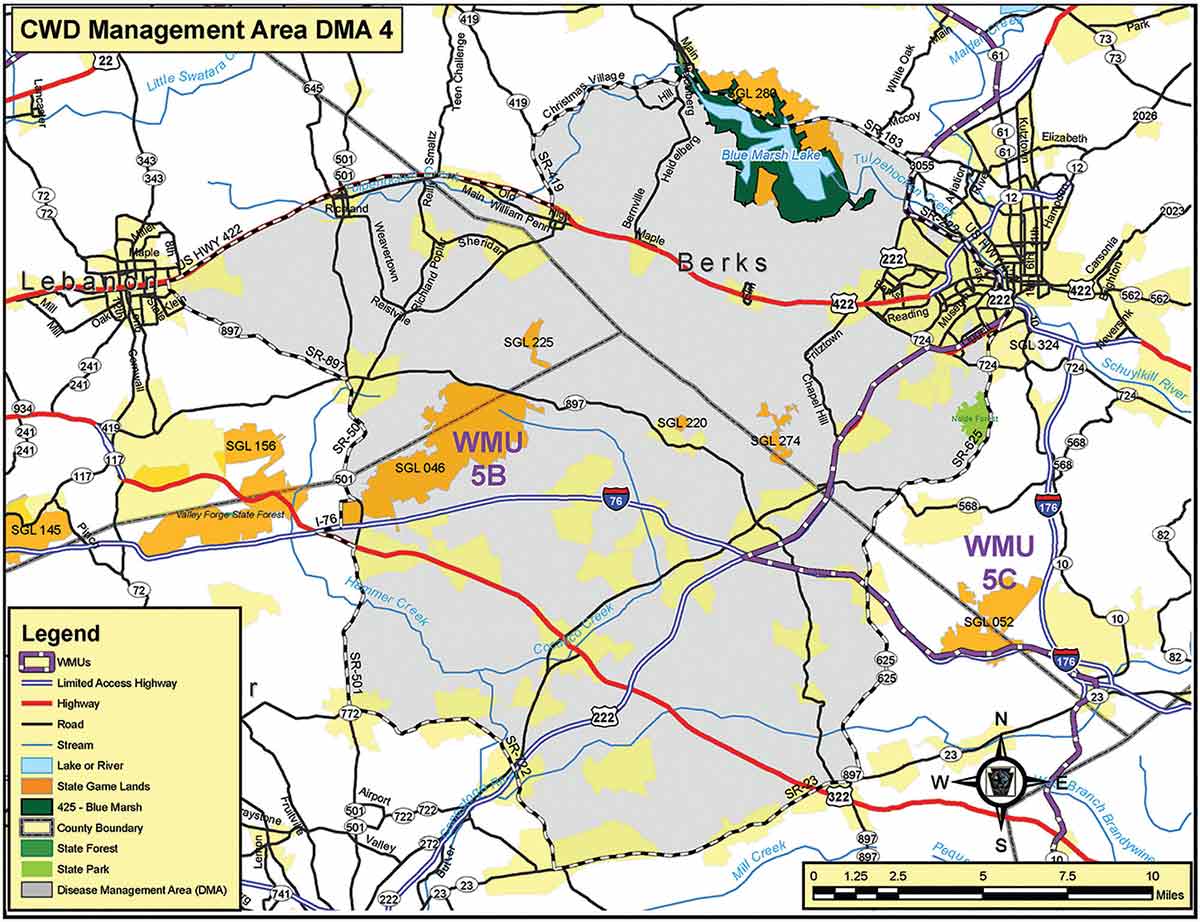A few hunters, at least, are willingly eating sick deer.
Most of the news coming out of the Pennsylvania Game Commission’s press conference announcing creation of a fourth disease management area – because of yet more chronic wasting disease – was sad, but all too expected.
Pennsylvania’s Department of Agriculture said on Feb. 12 that a farm-raised deer in Lancaster County tested positive for the always-fatal ailment.
Disease management area 4 is the predictable result.
Hunters in Lancaster, Lebanon and Berks counties will be dealing with limitations on how they can hunt and what they can do with deer they kill going forward. The use and even possession of urine-based attractants is now off limits, for example. So, too, is feeding deer. Hunters will be limited in where they can get deer processed or heads mounted, as well.

Bryan Burhans
“The necessity of another disease management area from CWD is devastating. This will impact the citizens in that area. It will impact out hunters in that area,” said commission executive director Bryan Burhans.
They’re not alone.
The expansion of “this insidious disease,” as Burhans called it, will cost all hunters across the state. He said they’ll see a bigger chunk of their license dollars going to combat the disease.
Non-hunters will feel the sting, too, said John Kline, governmental affairs director for the Pennsylvania Federation of Sportsmen’s Clubs.
Hunting is a $1.6 billion industry in the state, he said. Anything that threatens that hurts businesses big and small.
“The threat is not just for hunters,” Kline said.
There’s more bad news likely coming.
Disease management areas 2 and 3 will probably grow before fall because of new CWD-positive deer discovered near their boundaries. At the same time, the total number of sick deer discovered statewide in 2017 alone is already higher than the total detected, in total, in the five years prior.
And that’s with some samples yet to come back from testing.
Still, all that news, bad as is it, seems almost familiar.
What isn’t is news that some hunters are willing to consume deer known to be positive for wasting disease.
Wayne Laroche, special assistant for CWD for the commission, said there is no known case of a human contracting wasting disease from eating venison.
However, last year, Canadian researchers successfully infected macaque monkeys with CWD by feeding them muscle tissue from CWD-infected deer and elk. That marked the first time transmission of the disease via consumption of meat was shown possible.
That’s noteworthy for hunters.
“If CWD could spread to people, it would most likely be through eating of infected deer and elk,” says the Centers for Disease Control and Prevention.
“So that concern is growing,” Laroche said.
Not all hunters are getting the message or seem to understand the risks.
“We also have concerns, and the (Centers for Disease Control and Prevention) now advises, any sick deer should not be placed into the food stream. You should not eat them,” Laroche said. “We’d advise that people should not eat any sick-looking deer, regardless of what the disease is.
“And we still have people that insist on eating deer after we’ve tested them and told them it was (CWD) positive. We advise against that.”
The commission offered free CWD testing of all deer taken within a disease area last season. It will do so again this year, said communications director Travis Lau.
Hunters who submit their deer’s head for testing are notified of test results, usually within two weeks.
They should wait to eat any venison until after hearing from the commission, Laroche said.
In the meantime, the commission will ramp up the sampling of deer in disease management area 4. A contractor will be hired to collect roadkills for testing. Deer management assistance program permits will made available to use anywhere within the area they have peremission to hunt, too.
That will allow for the harvest of additional antlerless deer.
Whether that will be enough to slow the spread of CWD, or stomp it out, remains to be seen.
The first disease management area established in the state, back in 2012, was dissolved last year after five consecutive years of no sick deer being discovered.
That’s the only good news. In every other respect, it’s a bad situation, Burhans said.
Wasting disease will not “burn out” over time. There’s no evidence it’s always existed – and that deer have learned to adapt to it – over time either, he noted.
He compared it to the blight that wiped out chestnut trees a century ago. Chestnuts were a mainstay for wildlife, perhaps the number one food source across the landscape.
Now they’re gone.
Burhans said the commission is committed “to doing everything we can possibly do” to prevent wasting disease from having a similar impact on white-tailed deer and hunting.
But that’s a challenge.
“Chronic wasting disease is another one of those diseases that’s an ecological disaster,” Burhans said.
The facts about disease management area 4

A map of disease management area 4. Game Commission officials say no CWD-positive free-ranging deer have yet been found within the area.
Disease management area 4 encompasses 346 square miles in northeastern Lancaster County, southeastern Lebanon County and western Berks County. The northern part runs roughly between the cities of Lebanon and Reading. It includes the boroughs of Adamstown, Denver, Ephrata, Mohnton, Richland, Womelsdorf and Wyomissing.
State game lands 46, 220, 225, 274 and 425 are included in the disease area.
As within all disease areas, special rules are in place.
- The intentional feeding of deer is prohibited.
- Hunters may not use urine-based deer attractants or possess them while afield.
- Hunters who harvest deer within area boundaries may not transport the carcass outside of them without first removing and properly disposing of all high-risk deer parts, including the head and backbone.
Specifics on the roads that mark the area’s boundaries, along with general information on CWD and all of Pennsylvania’s disease management areas, can be found here.









